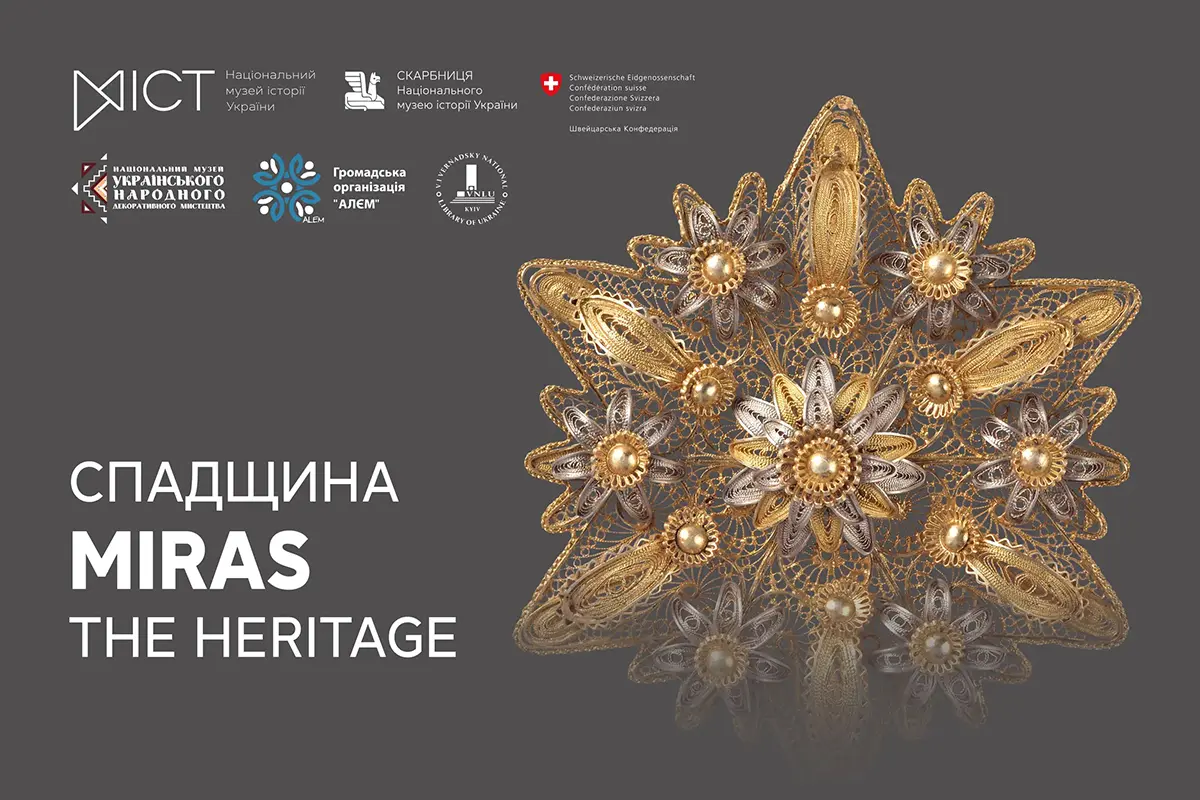
Miras. Heritage
Exhibition “MIRAS. Legacy”
What do we know about the culture of the Crimean Tatars — the indigenous people of Ukraine? What do the symbols of the traditional ornake ornament mean? How did Crimean Tatars dress and spend their leisure time 200 years ago? Which of the ancient traditions have survived to this day? What are the meanings that unite Crimean Tatars and Ukrainians?
Crimean Tatars are an indigenous people of Ukraine, whose origin and historical destiny are inextricably linked with Crimea and the Northern Black Sea. The traditional culture of this community for centuries combined the distinctive features of different civilizations: Mediterranean, Middle Eastern, Central Asian. But on its way, it has not become a fragment or a periphery of any of them, it has built its own identity and identity in the unique ethnic lace of Crimea.
Exhibition “MIRAS. Heritage” is a joint project with the NGO “Alem”, which is concerned with the protection and promotion of the Crimean Tatar intangible cultural heritage. The aim of the exhibition is to show the culture of the Crimean Tatars as a living phenomenon with continuous traditions that still influence the values of society, is part of everyday life, political culture and relations with the surrounding world and people.
At the exhibition “MIRAS. Heritage” for the first time comprehensively presents the largest collection of items of Crimean Tatar jewelry and everyday life on the mainland of Ukraine of the XIX — early XX centuries. In particular, here you can see silver khushkas (women's belts) and topeliques (on top of women's hats), which amaze with the sophistication of work in the technique of Crimean Tatar filigree (XIX — beginning of XX century, Treasury collection). Silver cases for the Koran and male amulets, crockery, traditional clothing of the Crimean Tatars, samples of embroidery with gold are also shown.
Visitors will be able to get acquainted with the customs, art, religious and worldview traditions of the indigenous people of Crimea thanks to the rich ornamental compositions. Masters of decorative arts created them not only as an element of the interior, but also invested in their works deep meanings that are close to Ukrainians, namely: the desire for well-being, a strong family, safety and protection, respect for elders, health, connection with nature and homeland.
In the second hall of the exhibition Crimea is represented through the eyes of another — on lithographs from the album of the same name by Friedrich Gross. This artist, a descendant of the German colonist, showed the traditional world of the Crimean Tatars of the first half of the XIX century, when there was a living legacy of the Khan times. Many of the monuments depicted by Friedrich Gross were destroyed in the process of Russian colonization.
The partners of the project are:
• National Museum of Ukrainian Folk Decorative Art;
• National Library of Ukraine named after V. AND. Vernadsky;
• designer of Ukrainian ethnic clothing Olena Didyk.
The exposition presents items from the private collections of Esma Ajieva, Vitaly Provolovsky and Elmira Seit-Ametova.
The curators of the exhibition are senior researcher of the National Museum of History of Ukraine Oleksiy Savchenko and head of NGO “Alim” Esma Ajieva.
The project is the platform that allows to see what is common in the ways of thinking, feelings and values inherent in both Ukrainians and Crimean Tatars. Interactive events planned in the exhibition space will help in this: lectures, master classes, informal thematic meetings with Crimean Tatar artists.
Exhibition “Miras. Heritage” is embodied within the project of the NGO “Alyem” “Unifying Senses”, which is implemented with the support of Switzerland, provided through SDC/SARS (Swiss Agency for Development and Cooperation, Swiss Federal Department for Foreign Affairs).
Entrance to the exhibition with a general ticket to the museum — 100 UAH, for students/students/pensioners — 50 UAH.